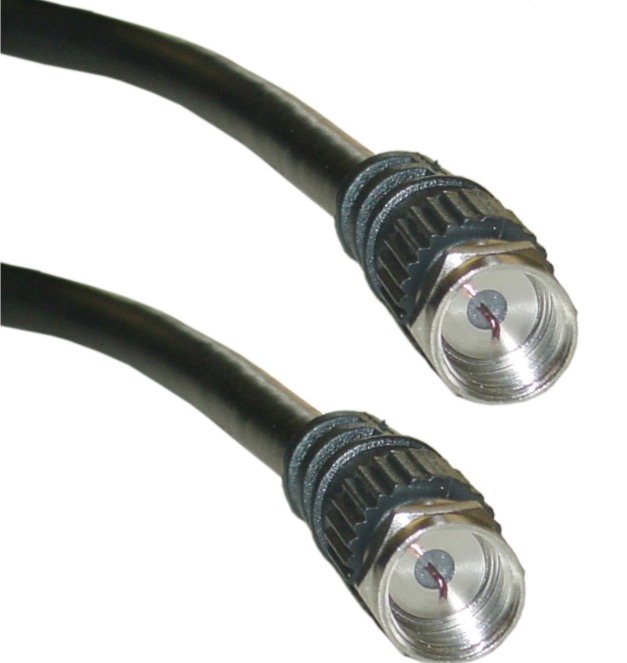Unveiling the World of Coaxial Cable Connectors

Understanding Coaxial Cable Connectors
In the intricate web of modern communication systems, coaxial cable connectors stand as silent enablers, ensuring the seamless transmission of signals between coaxial cables and a myriad of electronic devices. These connectors are the unsung heroes of our interconnected world, facilitating the flow of data, audio, and video signals. At their core, coaxial cable connectors consist of two essential components: the inner conductor, which carries the signal, and the outer shield, which guards it against interference. In this comprehensive guide, we will delve into the realm of coaxial cable connectors, exploring their types, sizes, and the critical role they play in maintaining signal integrity.
Anatomy of Coaxial Cable Connectors
To truly appreciate the significance of coaxial cable connectors, it's essential to grasp their structure and function. These connectors are meticulously designed, comprising the following key elements:
-
Inner Conductor: The inner conductor is the heart of the connector. It serves as the conduit for the signal, ensuring its smooth flow from one device to another. Made of conductive materials like copper or aluminum, the inner conductor is responsible for carrying the electrical current.
-
Dielectric: Surrounding the inner conductor is the dielectric material, typically made of foam or plastic. The dielectric provides insulation between the inner conductor and the outer shield, preventing electrical interference and signal loss.
-
Outer Shield: The outer shield encases the dielectric and inner conductor, safeguarding the signal from external interference. It's usually made of metal, often copper or aluminum, and ensures that the signal remains pristine throughout its journey.
-
Connector Body: The connector body is the exterior casing of the connector. It serves the dual purpose of holding the connector components in place and providing a secure point for connecting the cable to an external device.
Types of Coaxial Cable Connectors
Coaxial cable connectors come in a diverse array of types and sizes, each tailored to specific requirements regarding frequency, impedance, and power handling. Understanding the distinctions between these connectors is crucial for selecting the right one for your application. Here are some common types of coaxial cable connectors:
1. BNC (Bayonet Neill-Concelman)
The BNC connector is a popular choice for a wide range of applications, including video and RF (radio frequency) signal transmission. Its distinctive bayonet coupling mechanism allows for quick and secure connections, making it a favorite in the broadcasting and telecommunications industries.
2. F Connector
F connectors are widely used in cable television (CATV) and satellite television systems. They are known for their screw-on coupling mechanism, which provides a reliable connection for coaxial cables used in these applications.
3. N Connector
N connectors are renowned for their robustness and durability. They are commonly employed in high-frequency applications, such as radar systems and microwave communication. The threaded coupling mechanism of N connectors ensures a secure and stable connection.
4. SMA (SubMiniature version A)
SMA connectors are prevalent in applications that require precision and high performance, such as RF testing and wireless communication. They come in both male and female versions and are known for their exceptional electrical performance.
5. TNC (Threaded Neill-Concelman)
TNC connectors are an improved version of the BNC connector, featuring a threaded coupling mechanism that offers enhanced stability and reliability. They find use in military, aerospace, and industrial applications where ruggedness is paramount.
Matching the Right Connector to Your Needs
Selecting the appropriate coaxial cable connector for your specific application is essential to ensure optimal signal transmission. Here are some factors to consider when choosing a connector:
-
Frequency: Different connectors are designed for specific frequency ranges. Ensure that the connector you select is suitable for the frequency of the signal you intend to transmit.
-
Impedance: Coaxial cables and connectors are categorized by impedance, typically 50 ohms or 75 ohms. Matching the impedance of your connector to your cable is crucial for minimizing signal loss.
-
Power Handling: Some connectors are designed to handle higher power levels than others. Be sure to choose a connector that can safely handle the power of your signal.
-
Application: Consider the environment in which the connector will be used. Factors like moisture, temperature, and physical stress should influence your choice.
Conclusion
In the vast landscape of modern communications, coaxial cable connectors are the linchpin that ensures signals traverse the intricate web of cables and devices without losing their integrity. From BNC to SMA, these connectors come in various forms, each tailored to specific needs and frequencies. The next time you enjoy a crystal-clear TV show, browse the internet seamlessly, or make a phone call, remember that coaxial cable connectors are working tirelessly behind the scenes to keep you connected in our increasingly interconnected world. Their importance cannot be overstated, making them a cornerstone of modern communication systems.

 Mobile Signal Booster
Mobile Signal Booster